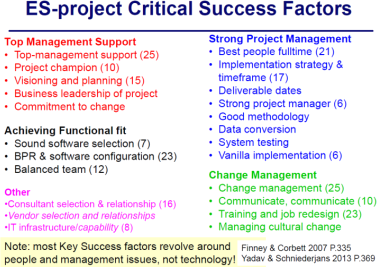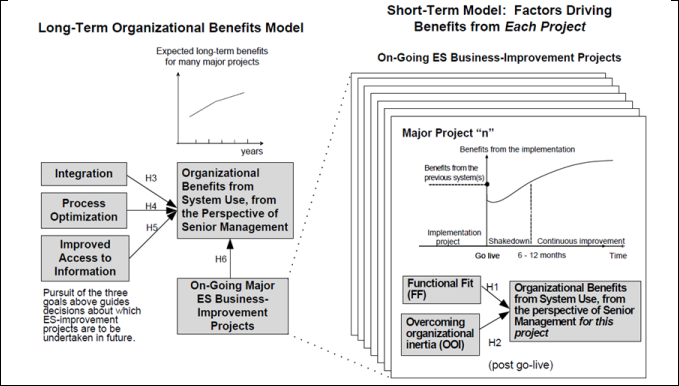ISYS90036 MOCK EXAM
Hello, dear friend, you can consult us at any time if you have any questions, add WeChat: daixieit
ISYS90036 MOCK EXAM – Suggested Points
Section 1: Organization and Enterprise System
1. Discuss TWO possible reasons why Queensland Health needed a new system (SAP Human Resource-Workbrain Rostering) in 2007 (8 marks)
Any 2 valid reasons such as:
• Support to the previous system would no longer be available
• To integrate various data across different entities– improve information transparency and accessibility, better decision making
• Consistency of data across the organisation and consistency of the user interface across applications
– less training required, better productivity
• Centralized approach – data, hardware, software and network facilities can be better controlled (better control of business processes, enhanced security )
• Opportunity to perform BPR, since ES is based on best practices.
2. Reflecting on the key characteristics of ERP system as an example of an Enterprise System, explain TWO potential problems with the previous SAP R/3 ERP system that was heavily customised at Queensland Health (10 marks)
ERP key characteristics:
▪ Packaged software
▪ Different development life cycle
▪ Involves long term relationship with vendor
▪ Generic, semi-finished products
▪ Requires configuration and sometimes customisation
▪ Contains ‘best practice’ business processes
▪ Based on deep knowledge accumulated from vendor’s implementation experience
▪ Integrated
▪ Data, process, IT infrastructure
▪ Evolves over time
▪ Functionality, architecture, capability, and service
Expected key points (accept any two points in bold):
- ERP is an integrated packaged software, so extensive customisation would involve extensive modification to the program codes which affect multiple modules due to the integration nature. The implementation would therefore be more complex.
- By heavily customising the package software, Queensland Health lose the opportunity to improve their business processes by following ‘best practices’
- Since the system evolves over time, heavy customisation would make it very difficult to maintain the system to keep up with the latest version of the software. Vendors do not normally offer ongoing support for the customised modules.
3. Using Kate and Galbraith (2007)’s Star Model of Organizational Design (see Figure 1 below) as a reference point, explain how an ERP or Payroll/Rostering system implementation at Queensland Health may affect the ‘People’ and ‘Process’ components. (12 marks)
Expected key points:
- People: skills requirements, talent development, motivation to learn, training, etc.
- Process: workflow, decision making, collaboration, etc.
The emphasis should be on ‘HOW’ ES implementation affects each component, not the other way round
Section 2: Enterprise System Implementation
4. SAP recommended the use of ‘parallel approach’ to system conversion but it was rejected by the project board. How would such an approach help prevent the problems experienced by Queensland Health after the new system was launched? (10 marks)
Key points:
– Previous system still runs as a backup
– Discrepancies and problems can be detected earlier and resolved before the payroll was processed
5. In the context of Enterprise System implementation at Queensland Health, discuss THREE Critical Success Factors that were likely not to be well managed during the project (15 marks).
Answer should be based on the following:
Mostly around Top Mgt Support, Project Mgt and Other categories (Consultant selection and relationship).
PM includes:
- Planning
- Implementation strategy
- Consultant selection and relationship
- Understanding of system requirements (scope and timeframe)

Answer should be related to the QH context.
6. Explain why Queensland Health was prioritising change management in replacing the previous 20-year-old SAP R/3 ERP system? Discuss two possible actions taken by Queensland Health as part of the change management effort. (5+10=15 marks)
Change management is important because the new system may affect process, structure, people and reward system. To overcome resistance to change, overcoming organizational inertia (OOI) has been identified as one of the key factors that drive the achievement of benefits from any ES implementation. Without adequate change management efforts, QH could encounter various problems and may not gain the expected benefits.
Two possible actions:
- Motivate employees to accept the new system by communicating the benefits expected
- Provide adequate training to empower all individuals to know how to use the new system properly
Section 3: Enterprise System Benefits
7. Discuss THREE possible benefits that Queensland Health could expect from a successful implementation of SAP Human Resource-Workbrain. For each benefit, indicate the benefit category based on Shang and Seddon (2002)'s Enterprise Systems Benefit Framework. (15 marks)
For ‘operational’ benefits, any three of the following within the context of QH:
– Cost reduction – in processing payroll, managing human resources and administration (less paper work)
– Cycle time reduction – improve information flow related to payroll and human resources
– Productivity improvement – for the HR department to manage payroll, for health institutions to manage human resources and scheduling.
– Quality improvement - Error rate, data reliability to data accuracy in managing payroll related data
Other possible clear benefit items could be from ‘managerial’ and ‘IT infrastructure’ categories.
8. Figure 2 shows Seddon et al.’s (2010) OBES model. The model suggests that in the long term, there are four key determinants of organizational benefits from Enterprise Systems, which are integration, process optimization, informating, and ongoing ES business improvement projects. Explain how integration, process optimization and informating can drive the long-term achievement of the operational benefits of SAP Human Resource-Workbrain. (9 marks)

Figure 2: Organisational Benefits from Enterprise Systems (OBES) Model
Answer should be based on the following:
• Integrate
o unify and harmonize ES, data and processes with an organization's unique existing environment, and use the systems to better connect organizational units and processes, as well as customers and suppliers
o a key driver for efficiency, leading to “Cost reduction” and “Productivity improvement”
• Optimize
o standardize most processes using best practices embodied in enterprise solutions software, mold and shape processes to fit the unique or strategic needs of the business
o a key driver for efficiency, leading to “Cost reduction”, “Cycle time reduction” and “Productivity improvement”
• Informate
o transform ES data into context rich information and knowledge that supports the unique business analysis and decision making needs
o a key driver for “Quality improvement”
Answer should be related to the QH context.
2023-06-16